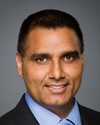Thank you very much, Madam Chair.
As my colleague Ms. Block said, it's very interesting, the diversity of interventions that we have this morning in witnesses. I wouldn't want to ask Dr. Kershaw about the issue of funding, because we well know that the problems with medicare are not simply about funding. The problems with medicare are about making the changes that we need to make in terms of how we deliver care, where we deliver care, who delivers care, and that is really what we should be talking about.
If you're going to have a lot of people who, as they live longer, become chronically ill, then you need to be able to have multi-disciplinary family primary care clinics with a whole range of people delivering care, in an appropriate scope-of-practice manner. And then you're going to also talk about making sure that you don't let chronically ill people go to hospitals. If they don't get management of their chronic care outside of a hospital, it's the hospital that causes the increased costs, and of course the illness. By sitting around in a hospital when you could be at home or in a community care setting, you're going to get all kinds of secondary diseases that come on to you, including infections.
What I wanted to follow up on was something that you did say. I think one of the things that we tend to get the squeeze on in terms of talking about health promotion and disease prevention is that as you transition to keeping people healthier, there is still going to be a whole generation of people in that generation who are going to be as sick as others because that prevention didn't come before. So you have to have a point in time, as you transition, where you're going to be doing both. And I think that is the issue we're facing now. As we transition, there's going to still be the high cost of spending until maybe ten years from now, when it starts to kick in on health promotion and disease prevention.
What you said, though, that really struck me very hard is the squeeze of that generation—the 35- to 45-year-old generation. You talked about a lot of other social programs that must come in place, and the one about ensuring family leave is a really important one. Norway did this three years ago, and the result not only in terms of savings, but in terms of mental health and in terms of just basically a healthier population is an extraordinary one.
They have the 18 months for leave, as you suggested, to look after kids at home, but the man—the father in the family—must take six months of that. They give you an 80% salary when you go off. People don't want to take time off if they're getting 50% to 55%, so you're looking at increasing the cost of social spending to achieve results ten years down the road, in which case they're going to have to find the money now.
That's a problem most governments are faced with: trying to find that extra money now to create a better whatever ten years down the road. How do you see that happening? How do you see people doing that transition? That is, as far as I'm concerned, the core of the issue. How do you spend more money now in that simple generation so you can save down the road in the next generation, when prevention and promotion takes a dip?






